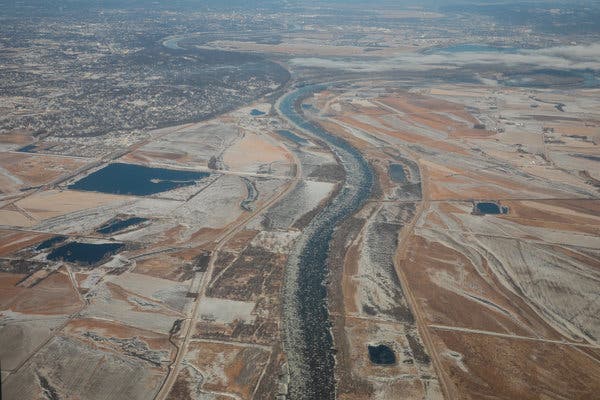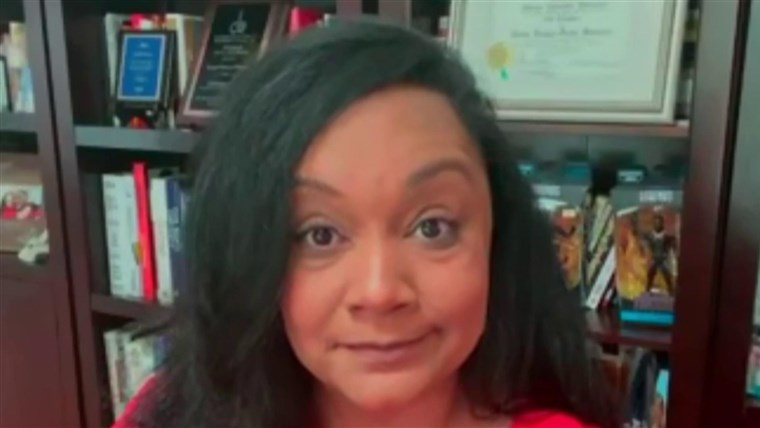Advertisement
South Dakota has four dead presidents carved in stone on Mount Rushmore. But good luck getting real, live presidential hopefuls to come visit.

LE MARS, Iowa — As the longtime owner of Archie’s Waeside steakhouse, Bob Rand has a story about almost everybody who wanted to be, or was, president in the past few election cycles.
Once, during the 2016 presidential race, Ben Carson and his campaign team showed up unannounced, and hungry. President George W. Bush’s security detail shut down the highway so he could arrive safely in town. Bob Dole came to the restaurant during his bid for the presidency, walked into the cooler and cut his own steak from a side of beef.
“It was the damnedest thing I ever saw in my whole life,” said Mr. Rand, reminiscing in the wood-paneled dining room, as waitresses pushed metal carts loaded with plates of New York strip and homemade hash browns to diners in booths.
Forty miles away, across the snowy terrain of bent cornstalks and grain silos, steak was also on the menu. Members of the local V.F.W. club were shooting pool at Whimp’s Place, as diners sat before plates of tenderloin. The owner, Dan Radigan, could remember just one politician who pushed through the restaurant’s door. “I think Senator Thune was here once,” he said.
The key difference between the two steakhouses: geography.
Whimp’s is in South Dakota, where the Republican senator John Thune is from, and Mr. Rand’s steakhouse is in Iowa, the center of the political universe during this time of the presidential election cycle with its caucuses set to take place Feb. 3. A robust lineup of presidential wannabes has swung by practically every steakhouse, cafe, bowling alley, brew pub and American Legion post in Iowa, from Wapello to Webster City, in past months.
Across the state line, and across the nation, the question rings out each election cycle: Why does Iowa, a state of barely more than three million people, get all the attention? Since 1972, Iowa has held its nominating contests first, a result of a national Democratic Party decision to spread out the schedule among states. Because Iowa’s process is so complicated, it had to start early.
Candidates dutifully show up. But that doesn’t mean they like it. Joe Biden and Elizabeth Warren recently complained about Iowa’s prominence in picking a candidate, and Julián Castro, before he dropped out of the race, said Iowa was “not reflective of the United States” and “not reflective of the Democratic Party.”
Elections, by their nature, highlight how much a person’s ZIP code can determine how decisive his or her vote will be. The early states and the swing states are lavished with attention. Others states are largely ignored.
That is particularly poignant in South Dakota, where the primary takes place in June. Far from the Iowa border in South Dakota communities like Rapid City, brushes with the presidency generally are limited to the bronze sculptures of 43 presidents scattered about town or the carvings of former presidents on the side of nearby Mount Rushmore.
But on the state line, politically active citizens blanch when caucuses are days away and attention, for once, is focused on the middle of the country — but not their slice of the middle of the country.
“There’s this flyover mentality that we’re not important. We’re ignored as a people and a voice, and Iowa’s got this outsized attention,” said Susan Almjeld, a music teacher who was sipping Old-Fashioneds with her husband, Paul, on a recent evening at Whimp’s.
Burbank, where the Almjelds live, is close enough to the Iowa border to be part of its media market. Residents are inundated with ads for candidates on their televisions and radios.
Ms. Almjeld works at a school in Iowa, and, from time to time, has considered driving to see candidates in person. But a touch of bitterness sets in.
“Sometimes I think, oh my God, they’re only a half-mile away,” she said, “but then again I’m comfortable on my couch, and I’m not part of the caucuses anyway.”
Other South Dakotans make the trek.
Michelle Randall of Sioux Falls, S.D., has traveled to Iowa to snap a photo with almost every major presidential candidate this election cycle, in case they never make it to her home state.
“By the time the primary comes to us the race is practically decided,” she said. “They say we’re the forgotten ones, and we kind of are.”
Ms. Randall has been in Elizabeth Warren’s selfie line and saw John Delaney in a crowd of 22 people at Old 60 Steaks & Chops in Sheldon, Iowa. She was determined enough that she managed to snap a photo with Bill de Blasio during the New York mayor’s long-shot campaign.
“I drove in a snowstorm to see him in Sioux City,” she said. “It was right after he declared. That was in a bar. I was literally standing there having a beer with Bill de Blasio. He was very politician-y, all Mr. Common Man and everything. Didn’t have a whole lot to say, just a little small talk. It was almost a little uncomfortable.”
Ms. Randall has set rules for her quest: She won’t drive more than two hours, except to see her favorite candidate, Pete Buttigieg, whom she has traveled to see several times and even knocked on doors in Iowa to rally support for him.
At a recent town hall event in Orange City, Iowa, Ms. Randall heard Mr. Buttigieg tell the crowd of about 150, “You will be deciding where our country heads next.”
She’s disappointed that she won’t in fact be among those deciding when the state caucuses next month.
“I wish I could be a part of it,” said Ms. Randall, an insurance lawyer. “But I have come to gain a respect for the people of Iowa who take the time to go out and see candidates.”
Nebraskans, residents of another Iowa border state, also are stung by neglect this time of year. The feeling is acute in Omaha, a major city of half a million people with Fortune 500 companies, a minor league ballpark and a world-class zoo. It’s just across the Missouri River from Council Bluffs, Iowa, population 62,000, where at least 11 Democratic candidates have visited in past months, some of them twice.
Amy Klobuchar visited Omaha, and so did Mr. Castro, when he was in the race. A few candidates have sent surrogates to the city for events. But on a recent evening, the television screen was the place to see presidential candidates as Democrats gathered in a downtown Omaha bar to watch a debate taking place just 130 miles away in Des Moines.
Jane Kleeb, chair of the Nebraska Democratic Party, cautioned that Democratic candidates shouldn’t write off her state, which holds its primary in May and which splits its Electoral College votes in the general election. Democrats are making inroads in Omaha, she said. Barack Obama won one electoral vote in 2008, a first for Democrats since the 1960s.
“The field is so crowded and voters have been so fluid that we could be that magic deciding factor,” said Ms. Kleeb, who just published a book called “Harvest the Vote: How Democrats Can Win Again in Rural America.”
Gladys Harrison is among Nebraska’s Democrats eager for attention not only for her own congressional campaign, which she thinks would benefit from a presidential candidate’s visit, but also for her community.
Her Big Mama’s restaurant sits inside a high-ceilinged new cornerstone of a development meant to transform a part of Omaha that residents had long complained was neglected with trendy apartments, a giant green space for outdoor concerts and coding classes for kids. If it were in Iowa, it would be a siren call for any Democratic candidate, she said.
The restaurant, started by Ms. Harrison’s mother, each month hosts the Hungry Club, which brings in local politicians, candidates and community organizers to speak before a crowd snacking on cold chicken sandwiches, sweet potato pie and other dishes culled from her family’s 100-year-old recipes.
“The Democratic Party has got to continue to send the message out that we’ve got the best candidates that can beat Trump,” Ms. Harrison said. “And everybody needs to hear that message.”



